by GaryG
I have already written here about why I bought Vianney Halter’s most recent creation, the Deep Space Tourbillon (see Why I Bought It: Vianney Halter Deep Space Tourbillon).
The Deep Space Tourbillon, however, was in fact the third watch from this leading light of independent watchmaking to grace my collection. The first, a Contemporaine in white gold, was mine only briefly for reasons I’ll describe in a future article. A piece that has been with me much longer, and that for me is a long-term keeper, is the wonderful Antiqua.
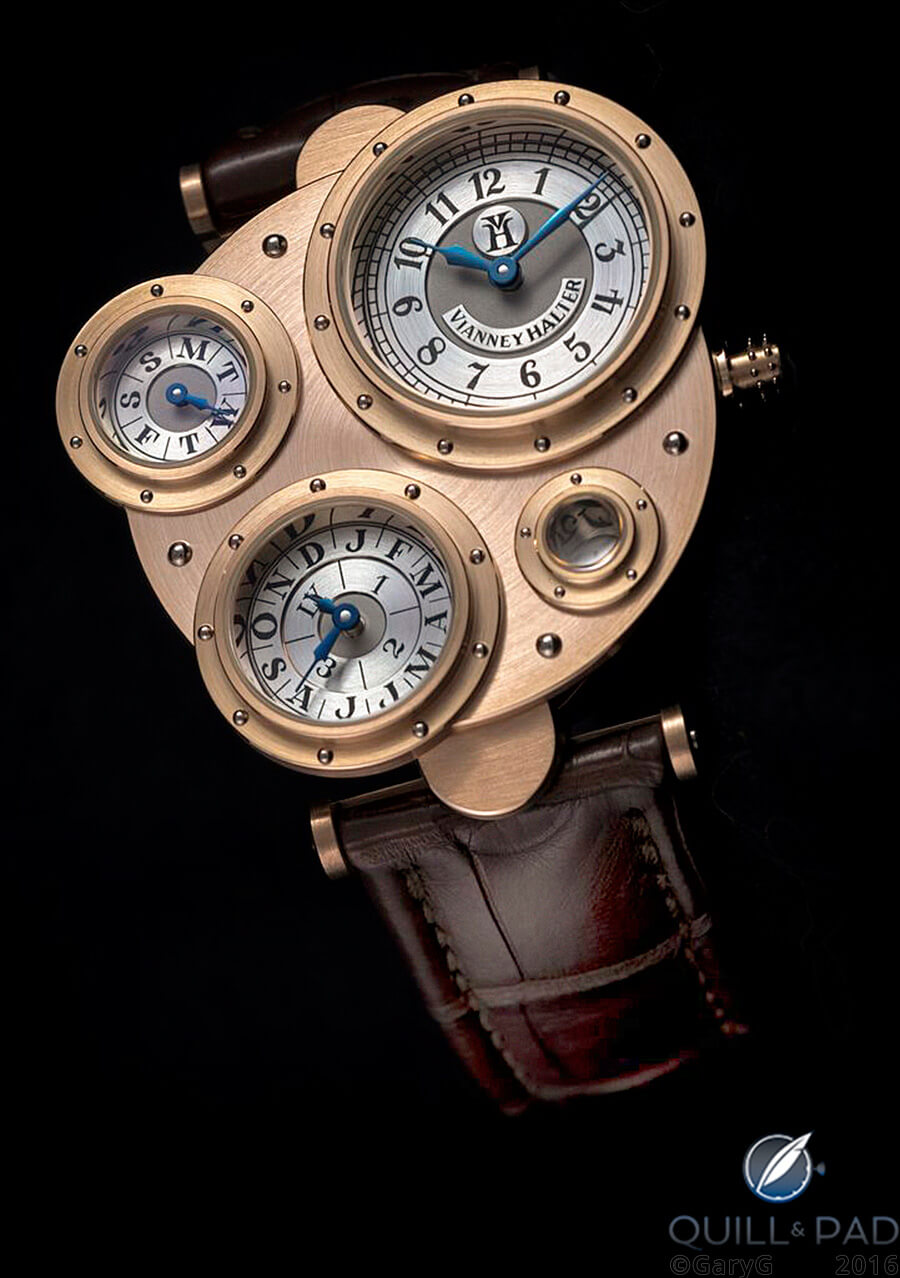
Antiqua by Vianney Halter in pink gold
Why I bought it
Within my friend Terry’s watch portfolio taxonomy, at first I’d be tempted to characterize the Antiqua as a “patronage” piece: one purchased in recognition of and in support of the great work of one of the most skilled independent watchmakers.
Upon reflection, however, I’m going to classify it as a member of the “investment” category: a watch that, regardless of its prospects for future financial appreciation, can be a foundational element of a carefully curated collection. For me, the Antiqua merits a spot in the watch box of any serious collector of independent watches, and I know that I’m certainly not alone in my view.
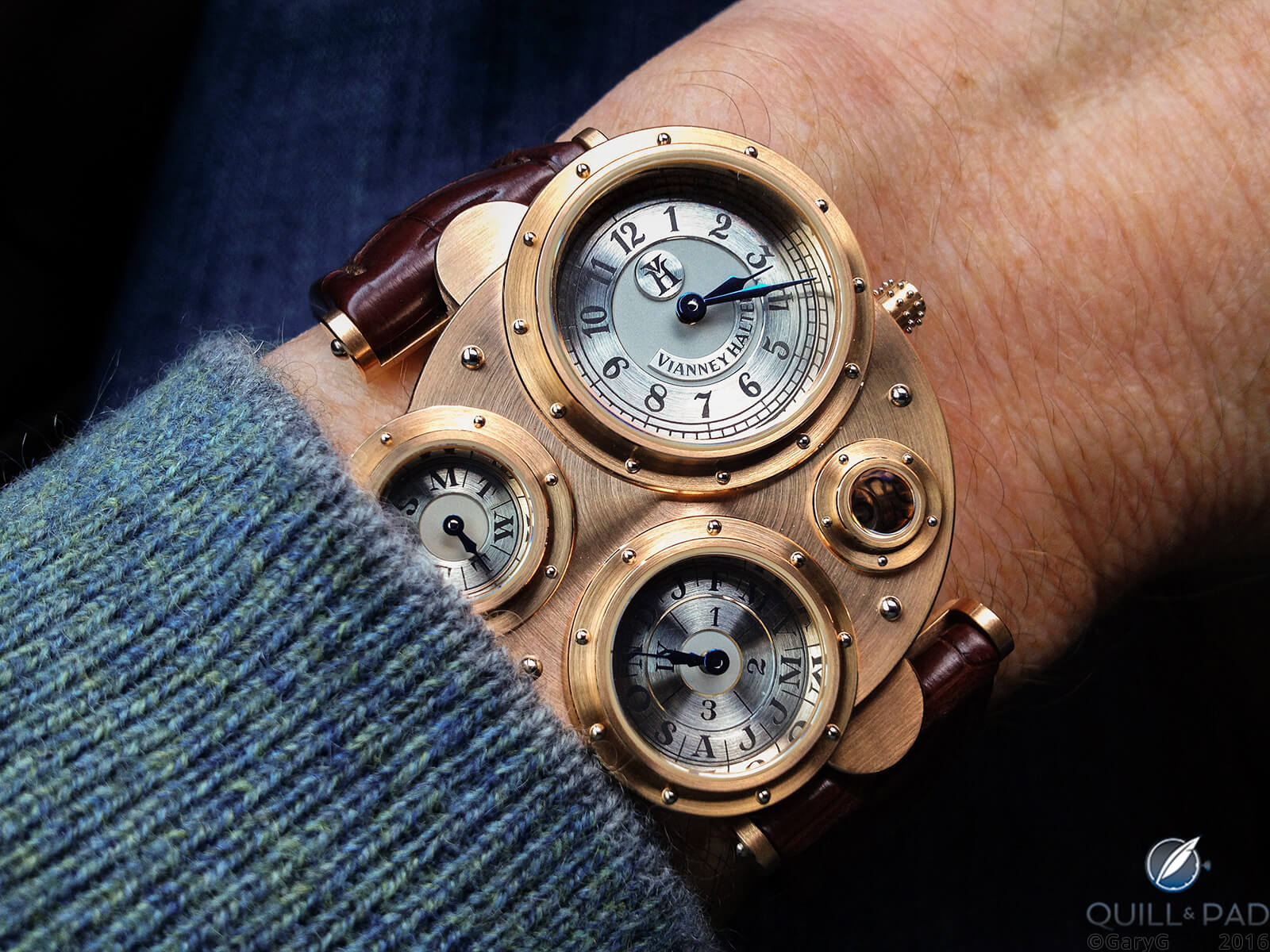
Foundational piece: the author’s Vianney Halter Antiqua
The truth is that I fell for the Antiqua when I first saw one more than a dozen years ago; while many of my friends will freely confess that at the time they were at first put off by its looks, I was smitten from the start. It took me a number of years to save up the money and find the right piece, but for me buying an Antiqua was just a matter of time.
Why I love it
I’ll start with one word: steampunk.
The steampunk ethic really appeals to me, and I appreciate Halter’s use of something he calls the Futur Anterieur (roughly, “the future as seen from the past”) as a guiding design principle. Because we cannot truly see the future, at any point in time we envision it through the lens of present-day items and technologies. As seen from the 1860s’ vantage point of Jules Verne, building a submarine or spaceship with heavy, riveted windows would have made perfect sense; and for the occupants of those vessels as imagined by Halter, a matching watch would be just the thing to have.
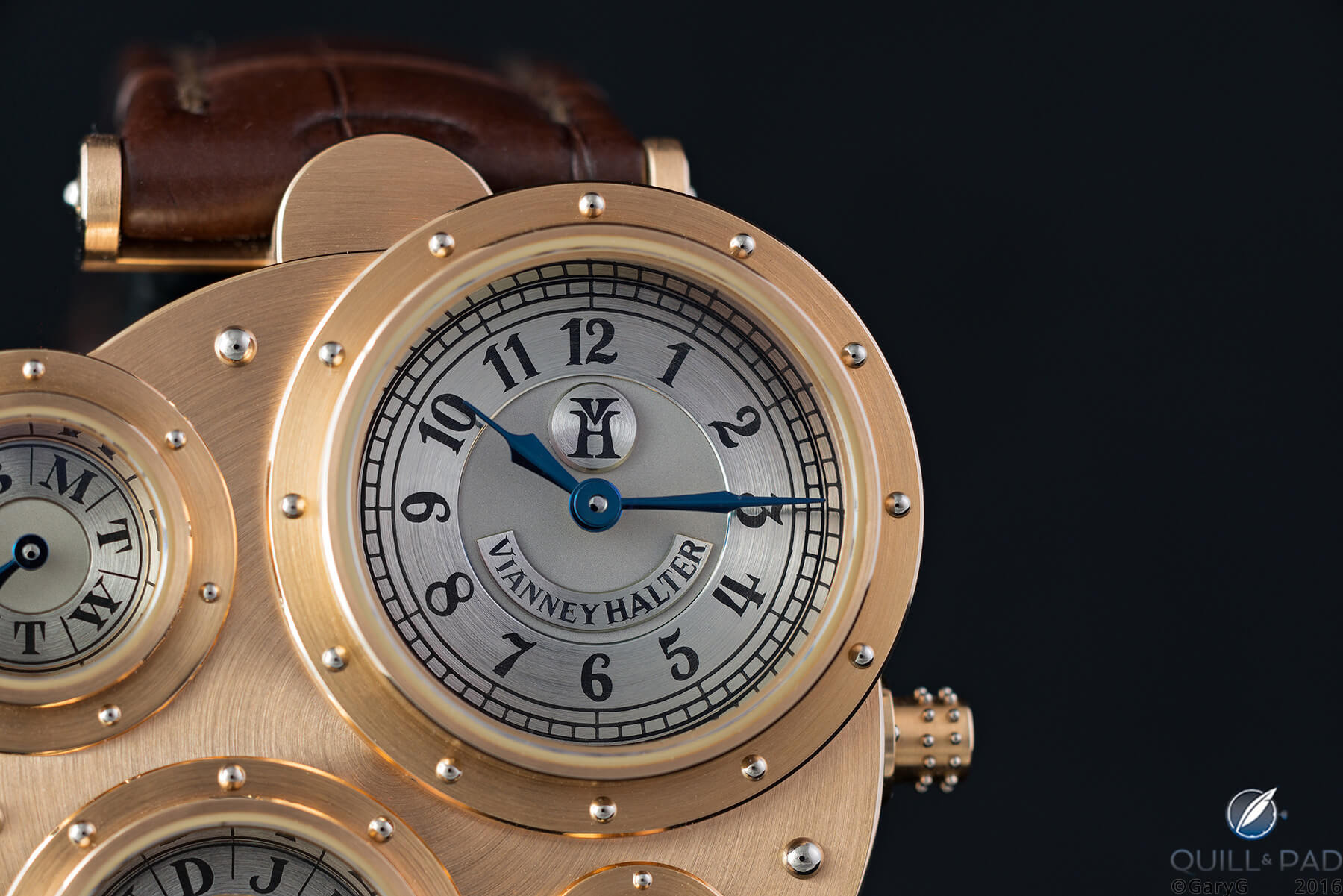
Steampunk aesthetic: Vianney Halter Antiqua
I think that it’s also fair to say that the Antiqua began the modern design movement in watches. A leading independent watchmaking impresario once told me that he considers the Antiqua “the missing link between traditional and contemporary watchmaking.”
I’m of like mind, and for this reason alone, for me the Antiqua is one of the few most important independent watches ever made.
With all of the commentary over the years about the dramatic appearance of the Antiqua, I don’t think that adequate attention has been given to just how beautifully made it is.
If there are cases more beautifully shaped and finished, I have yet to see them. The portholes are gorgeous, and the perfectly polished inner flanges surrounding each dial give real life to the watch, reflect the dial indices in interesting ways, and throw light on the dials themselves.
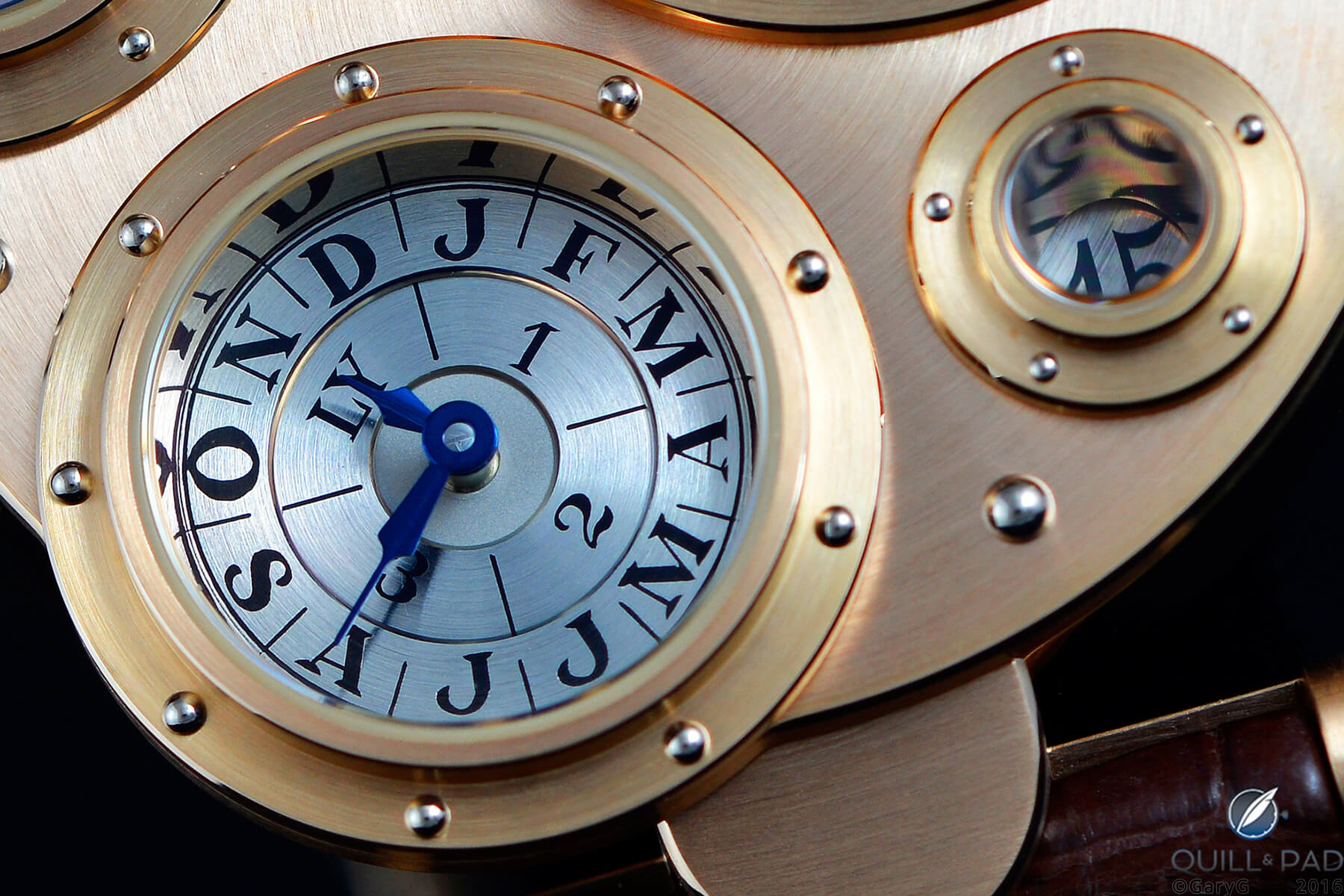
Reflects well on you: dial detail of Vianney Halter’s Antiqua showing polished flange
There are other watchmakers who use rivets in the construction of their pieces, but the Antiqua uses them better than any other watch I know.
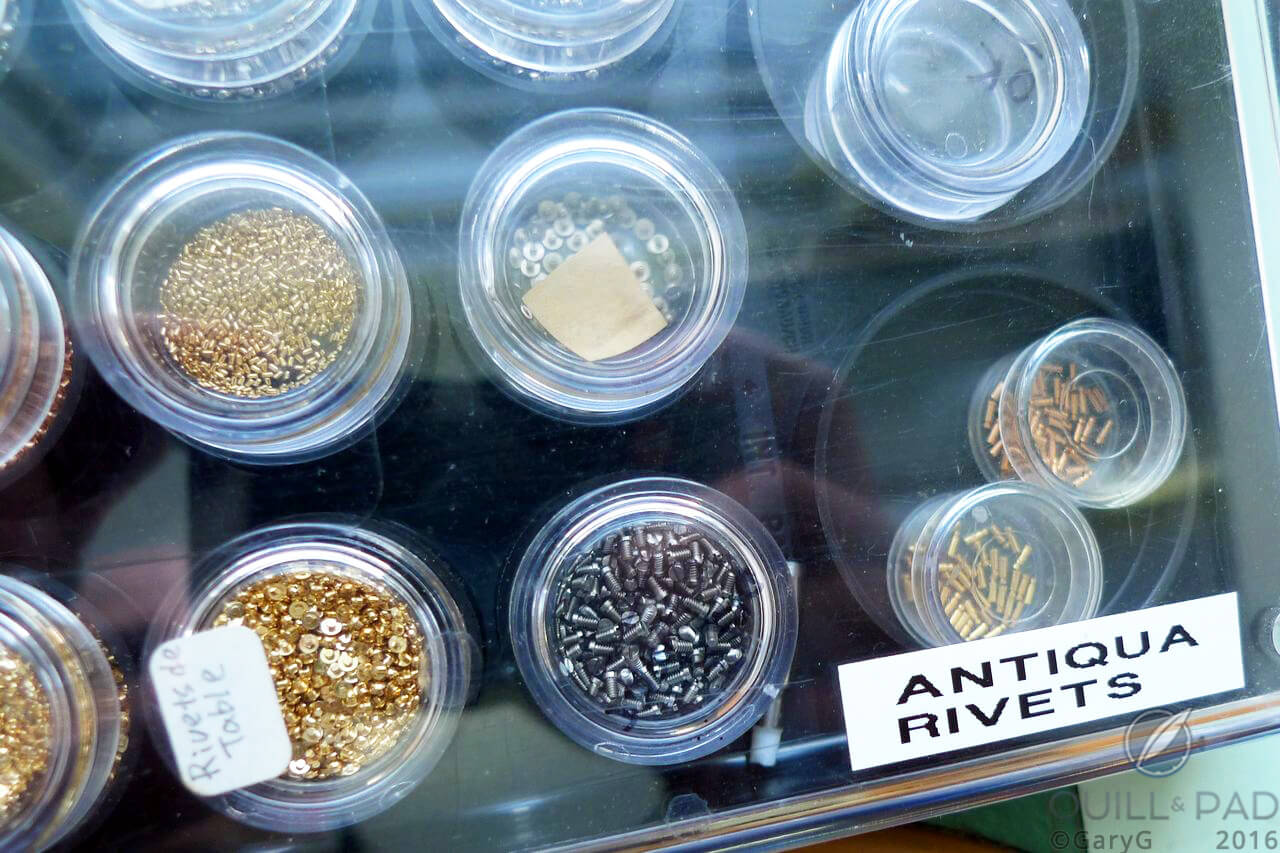
Mother lode: Antiqua rivet supply at the Vianney Halter workshop in Sainte-Croix, Switzerland
There are lots and lots of rivets in this watch, according to Vianney’s website 104 in all. They are of different colors, sizes, and shapes – all finished and installed by hand, including those that are inserted outward from the interior of the crown sleeve through tiny holes.
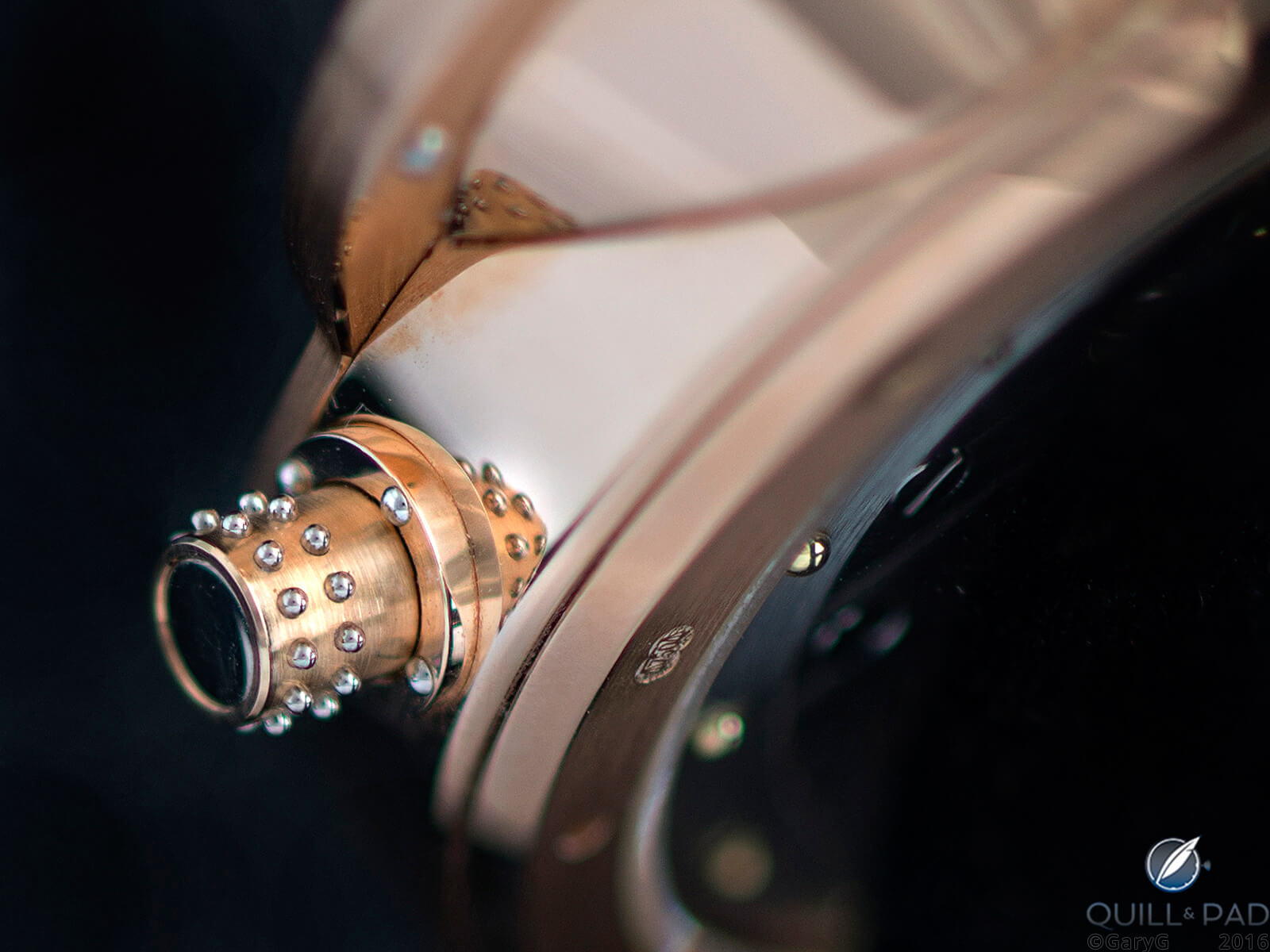
Riveted crown of the Vianney Halter Antiqua
Unlike some more recent design-centric watches, behind that multi-windowed front the Antiqua is basically a “simple” round watch. That got me thinking: what might an Antiqua variant in a round case look like and how big would it need to be? (No, really, I don’t have way too much time on my hands despite indications to the contrary.)
With my ruler in hand and mockup skills at the ready, I cooked up the rendering below: with apologies to both Halter and Kari Voutilainen, here’s a look at what an open-dialed Antiqua in a supersized 42 mm Observatoire case might look like.
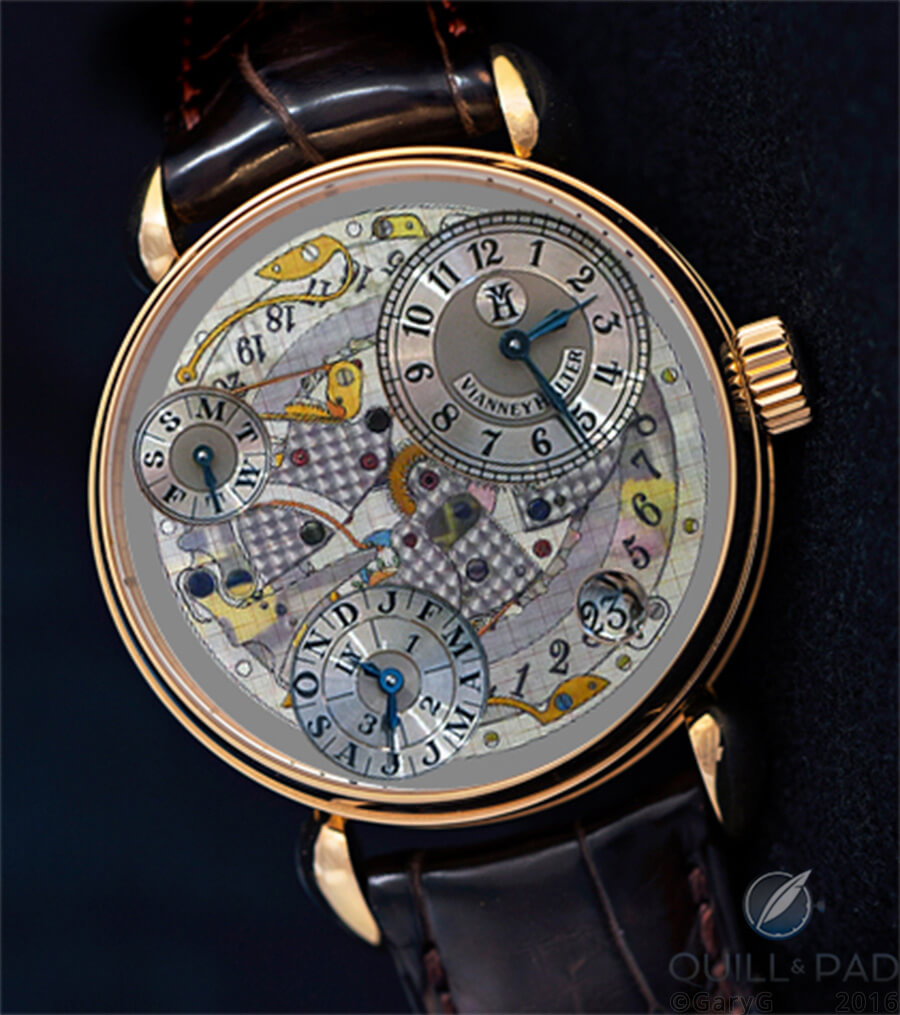
Rendering of a fantasy: round-cased Vianney Halter Antiqua
Fantasies aside, the real-world watch sits beautifully on the wrist, as you can see below. I don’t have a big wrist, but the size of the watch is almost ideal for me and the lug design allows the strap to come straight down around each side of the wrist.
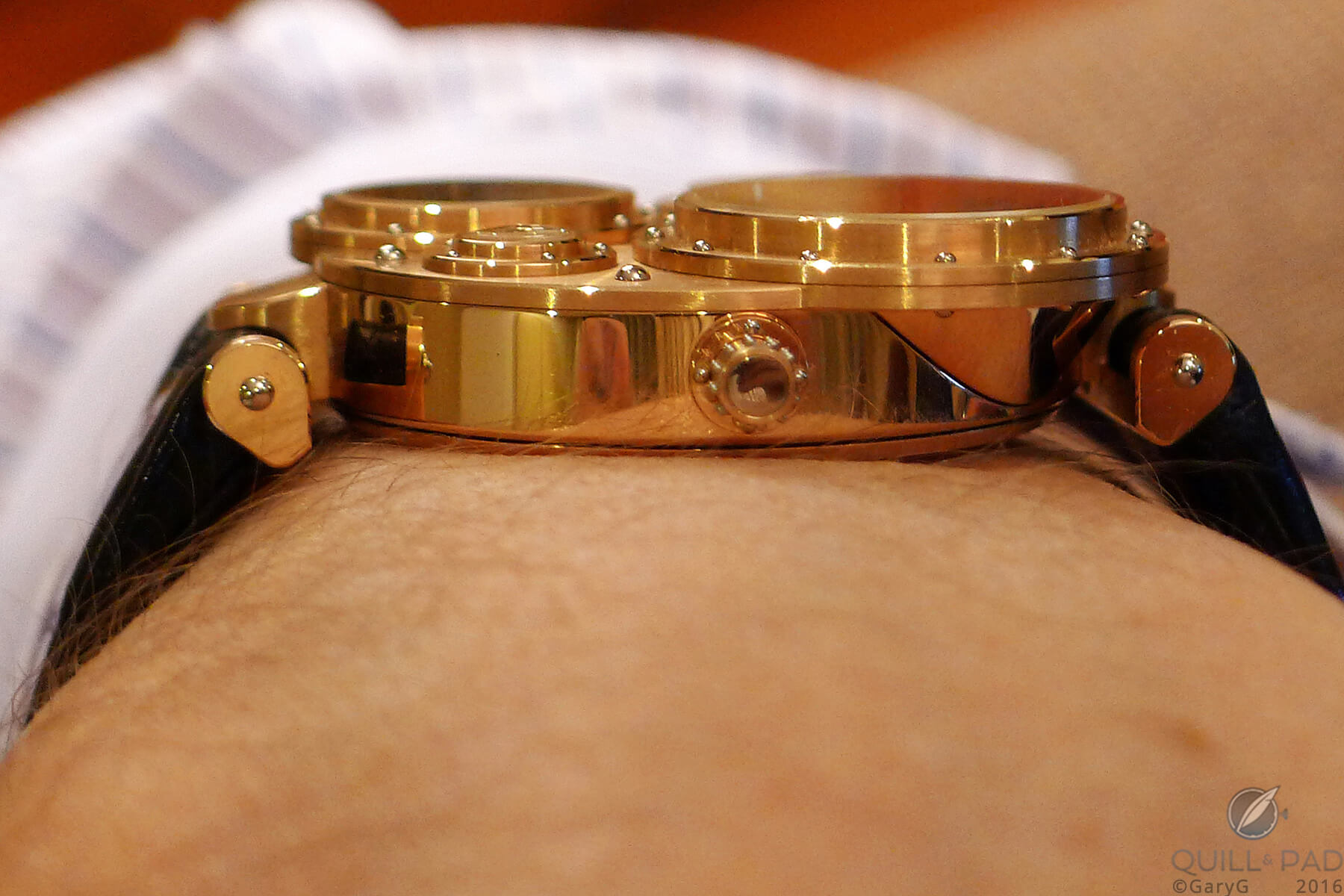
On the wrist: Vianney Halter Antiqua
By the way, the idea that the Antiqua is a huge (or even big) watch is sorely mistaken. Some early reviews characterized it as large and bulky, but by today’s standards this is actually a quite modest, almost delicate piece.
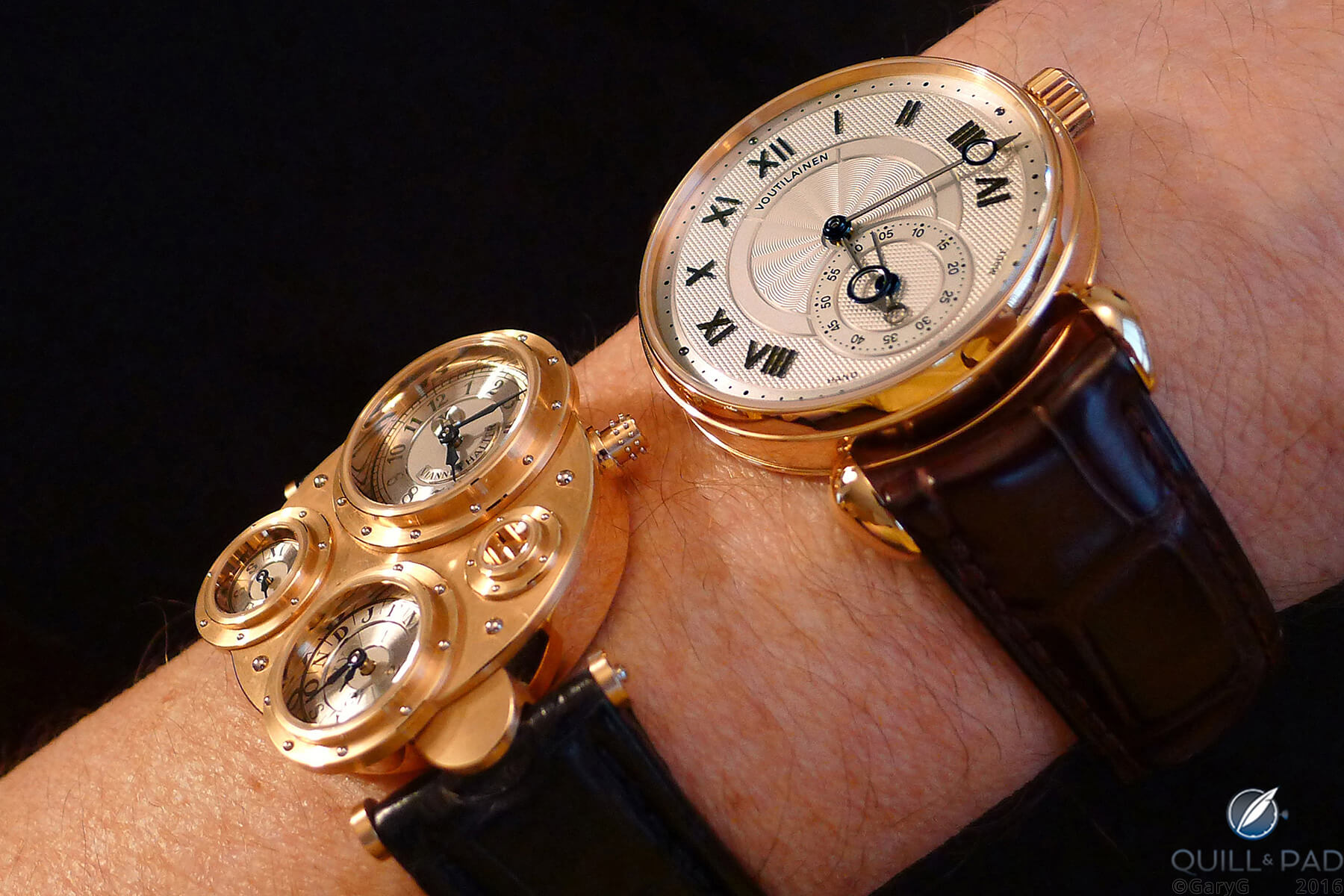
Size comparison: Vianney Halter Antiqua with Kari Voutilainen Observatoire
The pink gold version of this watch features engraved platinum dials, and they are fantastic! The decision to use platinum was an inspired one, giving the watch a highly distinctive look. Each dial is multi-part and multi-level, and each displays a variety of finishes.
The dials start life as separate pieces that are hand engraved, which with platinum is no easy feat. I understand that on Vianney’s gold dials, the numerals and divisions are pre-engraved; but on the platinum dials of the Antiqua, it’s all done free-hand before the indices are filled with lacquer.
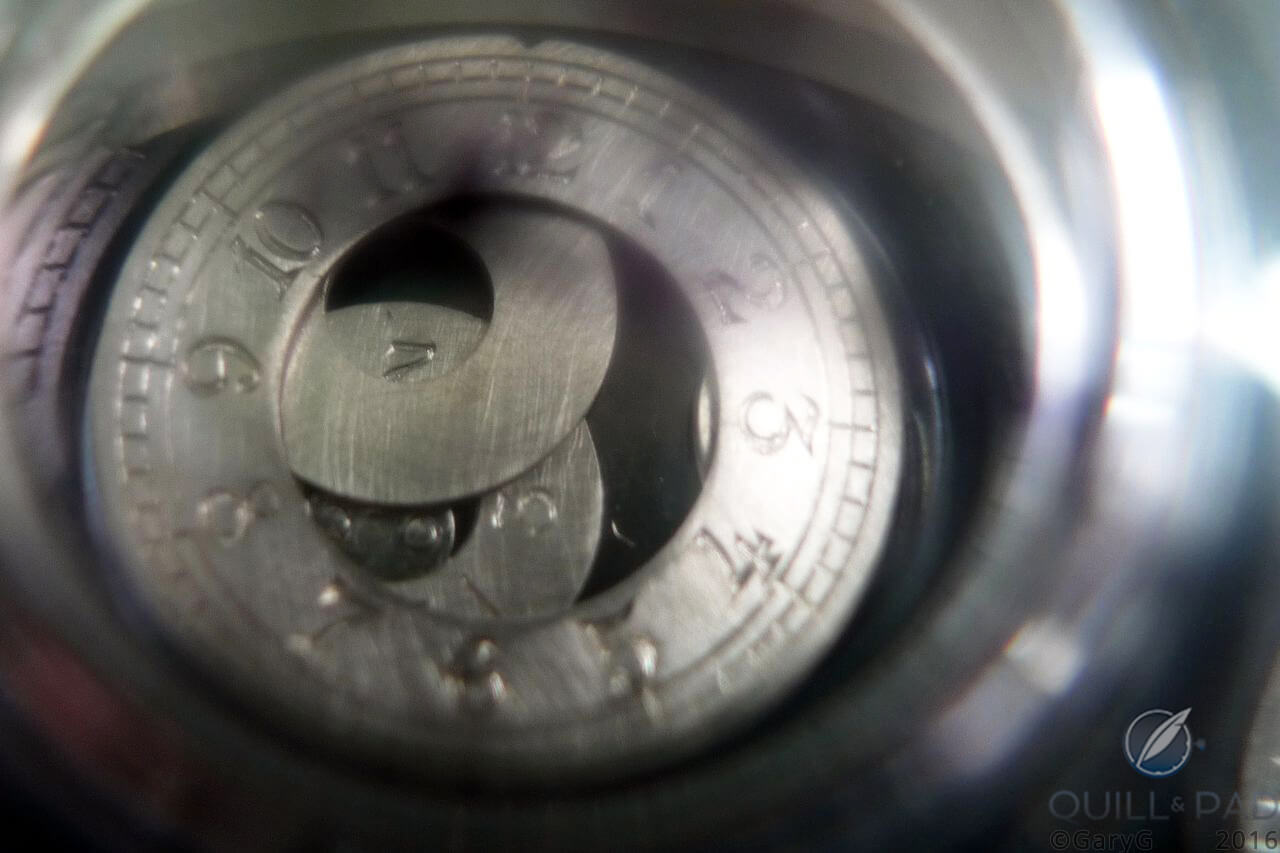
Engraved dial components of the Vianney Halter Antiqua
The hands have attractive shapes consistent with the design of the rest of the watch, which are nicely domed and beautifully blued.
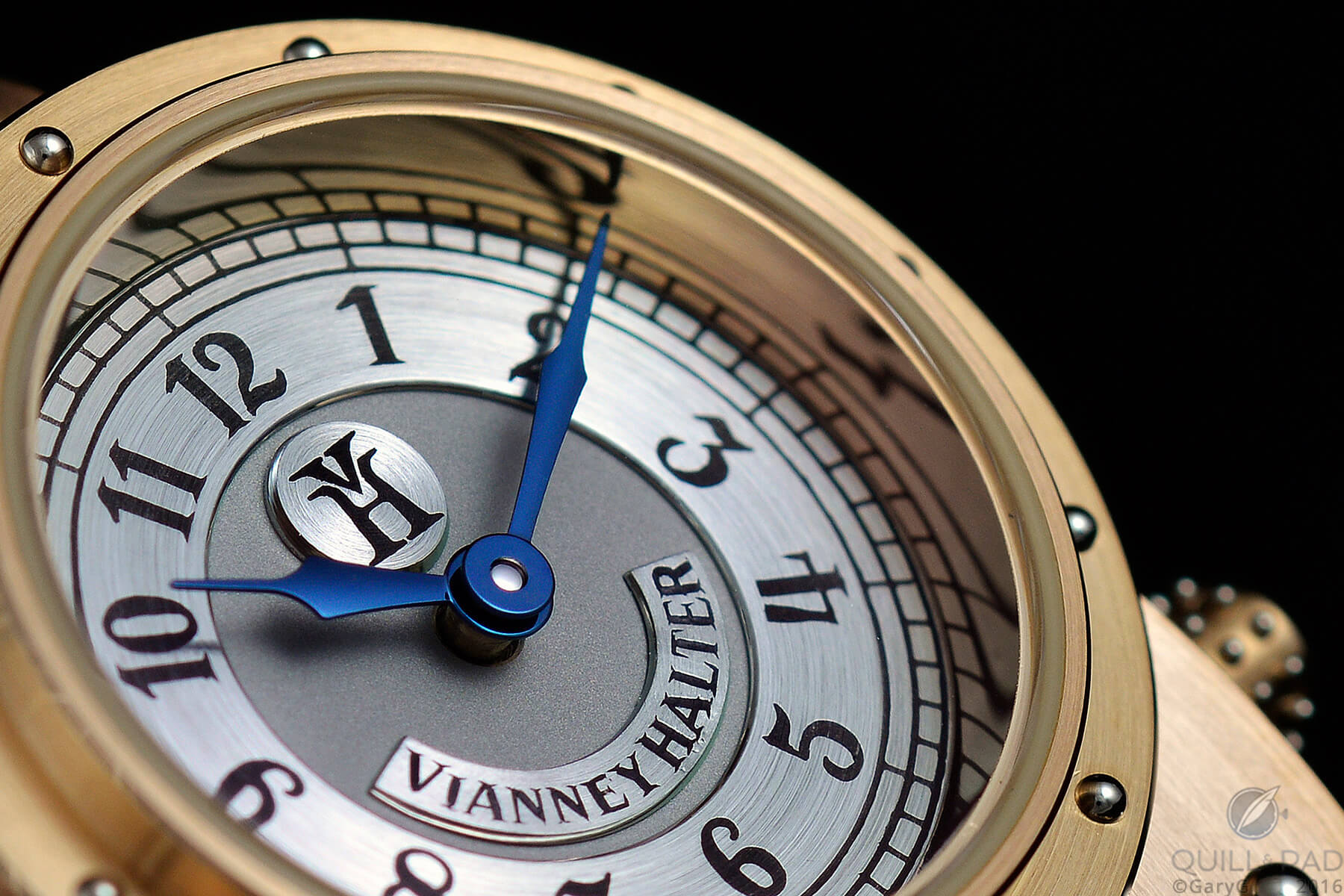
Dial detail, Vianney Halter Antiqua: highlighting the blued hands
Let’s not forget the movement! First of all, it’s a perpetual calendar: what else would a time traveler take? Second, the design had to be tremendously inventive to put the indications in the appropriate spots on the surface of the watch.
Another underappreciated aspect of the Antiqua is the sophistication of the calendar indications. The movement has an instantaneous day and date change at midnight; and I do mean instantaneous and I do mean right at midnight! Both the day hand and the date wheel (and in 31-day months, the month indicator) snap over with an audible crack as the hour and minute hands align at the top of the dial.
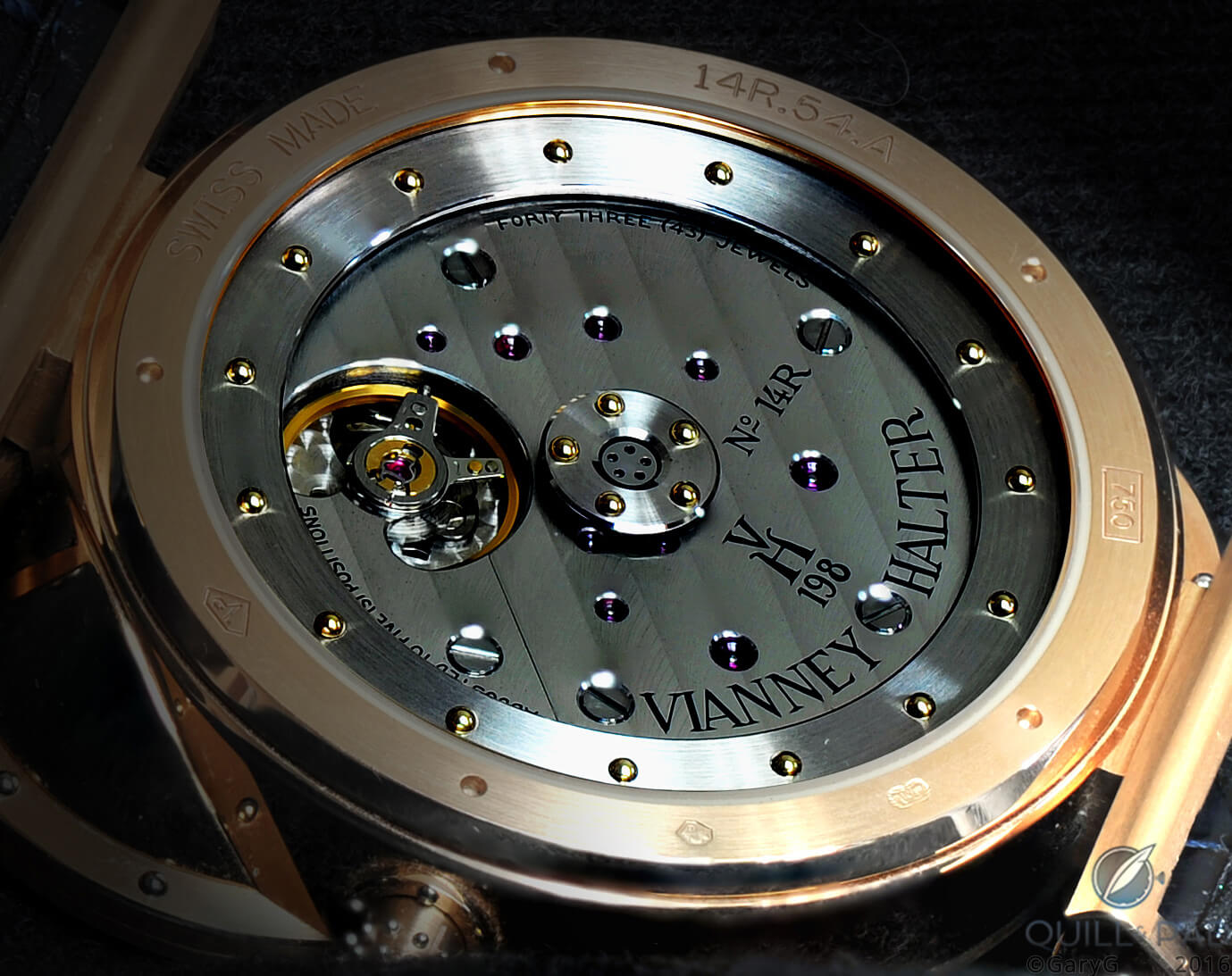
Reverse of the Vianney Halter Antiqua showing the mystery rotor
On the reverse of the watch, the view is dominated by Halter’s patented mystery rotor with a sapphire crystal section connecting the rim and center and more rivets on display. The rotor spins like a top at the slightest provocation, while the whirring rivets provide a real visual sense of movement.
Beneath the rotor, Vianney has opted for what I’ll call a seven-eighths bridge and mysterious balance cock. If you look very carefully at the photo below you may be able to see the concealed joining line between the bridge and balance cock, but from most angles it is almost impossible to discern.
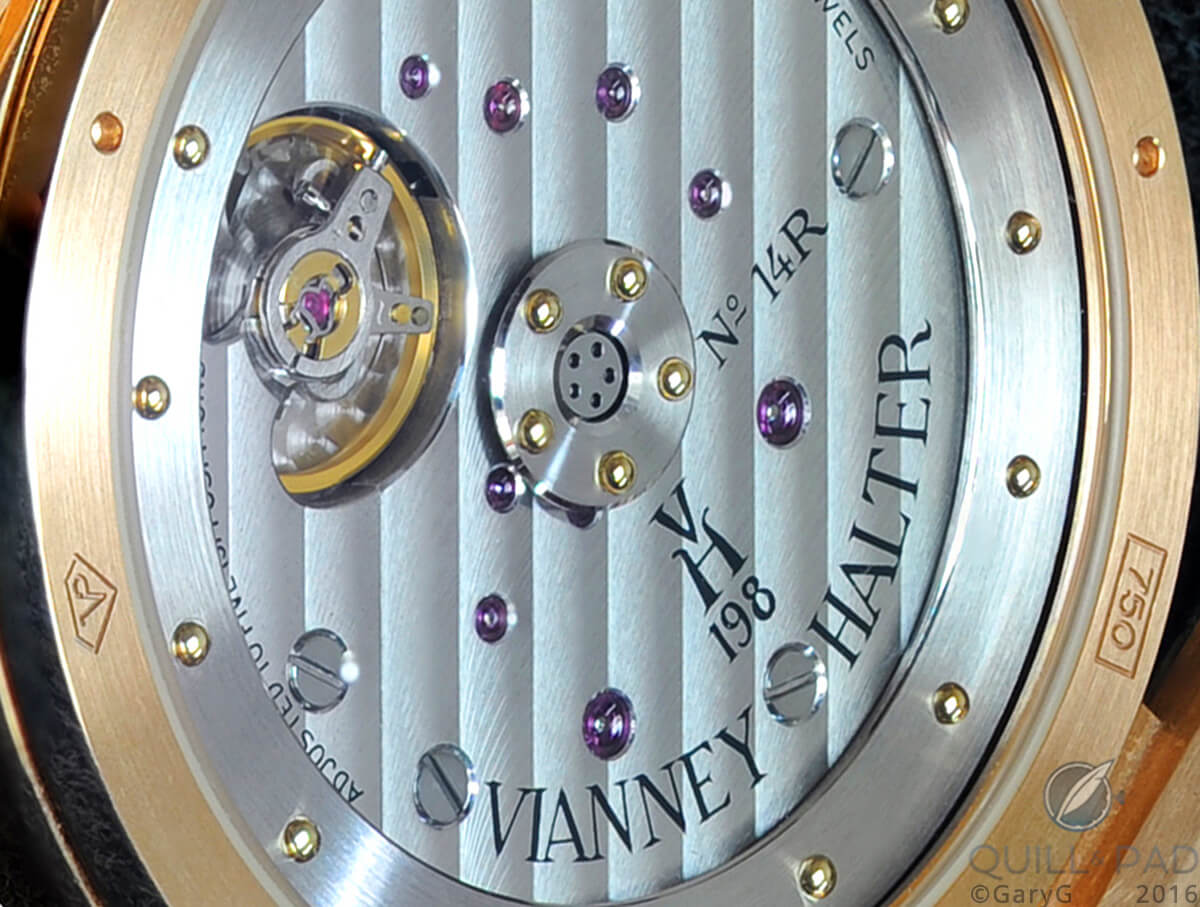
Fine line: can you see the seam?
The fun – and attention to detail – doesn’t stop with the watch itself. Each Antiqua comes with a matching winder box that displays the watch through its own riveted porthole. In a final lovely design touch, the winder is built so that it always stops spinning when the watch is in a perfectly upright position, allowing the winder and watch combination to be used as a desk clock of sorts or simply appreciated in a place of pride on the shelf when not locked away for safekeeping.
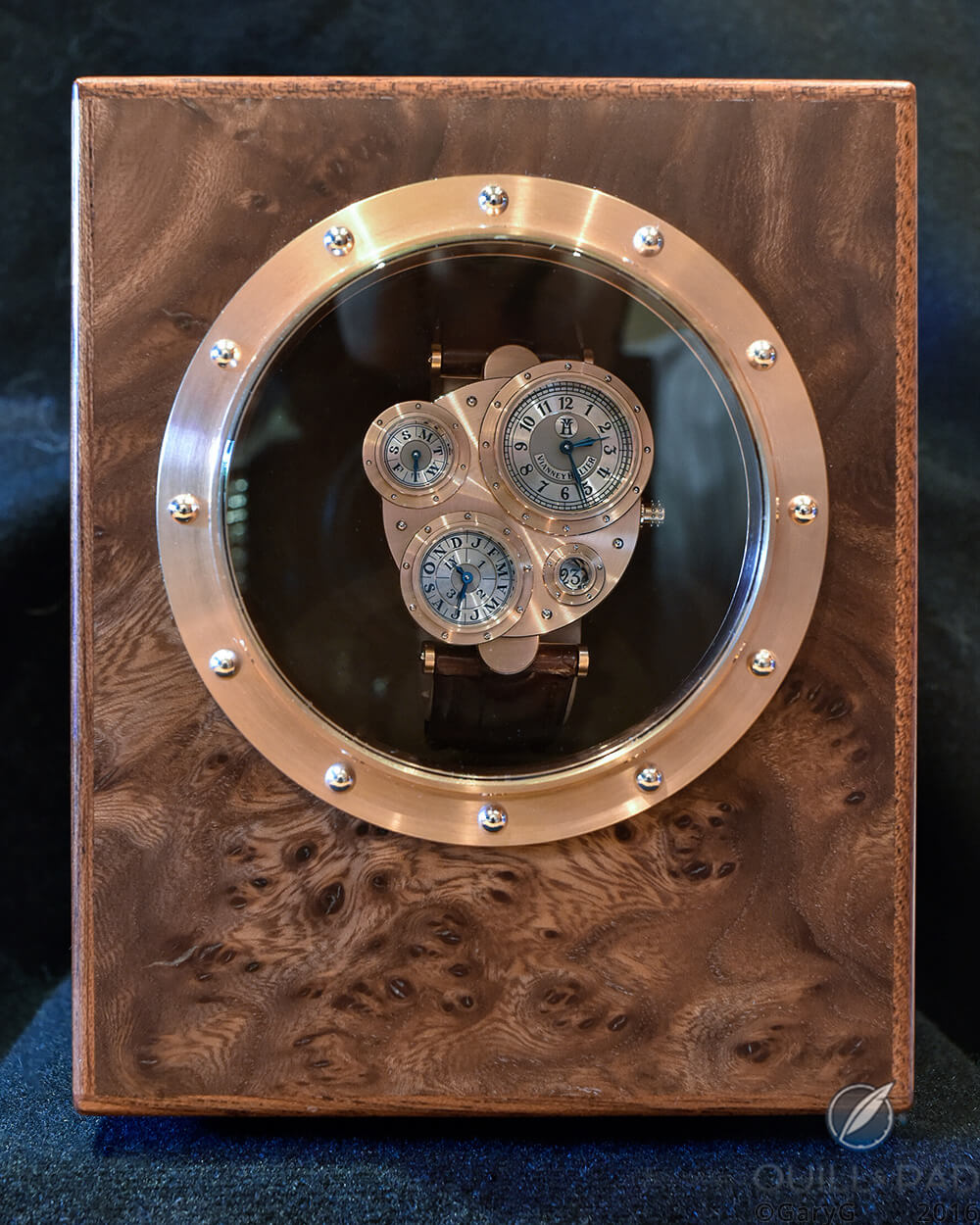
The full set: the author’s Vianney Halter Antiqua in its matching winder box
Any complaints?
I haven’t found the perfect watch yet, and there are a couple of things about the Antiqua that I’d consider changing if I were king.
The mystery rotor reveals little: for me it would be great if the interior bits of the movement, rather than the monolithic bridge and balance cock assembly, filled the view through the sapphire rotor.
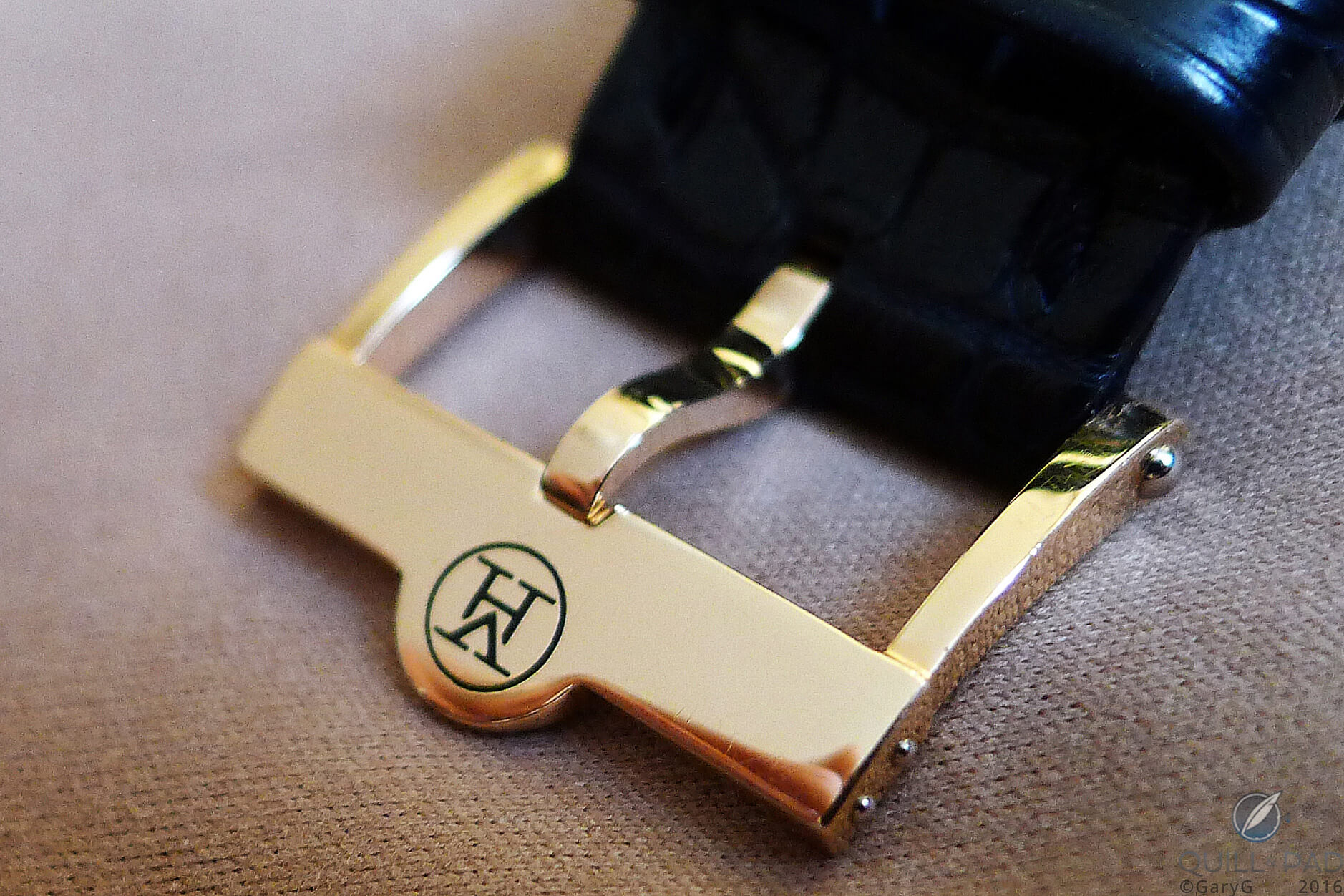
Too dainty? The clasp of the Vianney Halter Antiqua
And the clasp, while it boasts the trademark rivets, seems almost feminine to me. While I’m at it, the same might be said for the printing on the movement.
For a watch that so many people think is brutish, in real life it’s actually almost dainty! Halter’s Classic Janvier is a meatier interpretation of the same themes and points to how the Antiqua might have been subtly different.
Is it for you?
Everyone I know who owns an Antiqua loves it, and the few folks I know who have sold theirs all seem to regret having done so. But is it right for you? Consider going on the search if you:
- Appreciate the Antiqua’s place in watchmaking – and design – history
- Happen to love the steampunk look and the unique interpretation of it that the Antiqua provides
- Understand and value the extent to which this watch exhibits a very high standard of mechanical ingenuity and finishing quality
- Appreciate the relative rarity of the Antiqua, with fewer than 100 examples ever having been made in all metals
- Want to fit in at the next lunch meeting of my local watch buddies
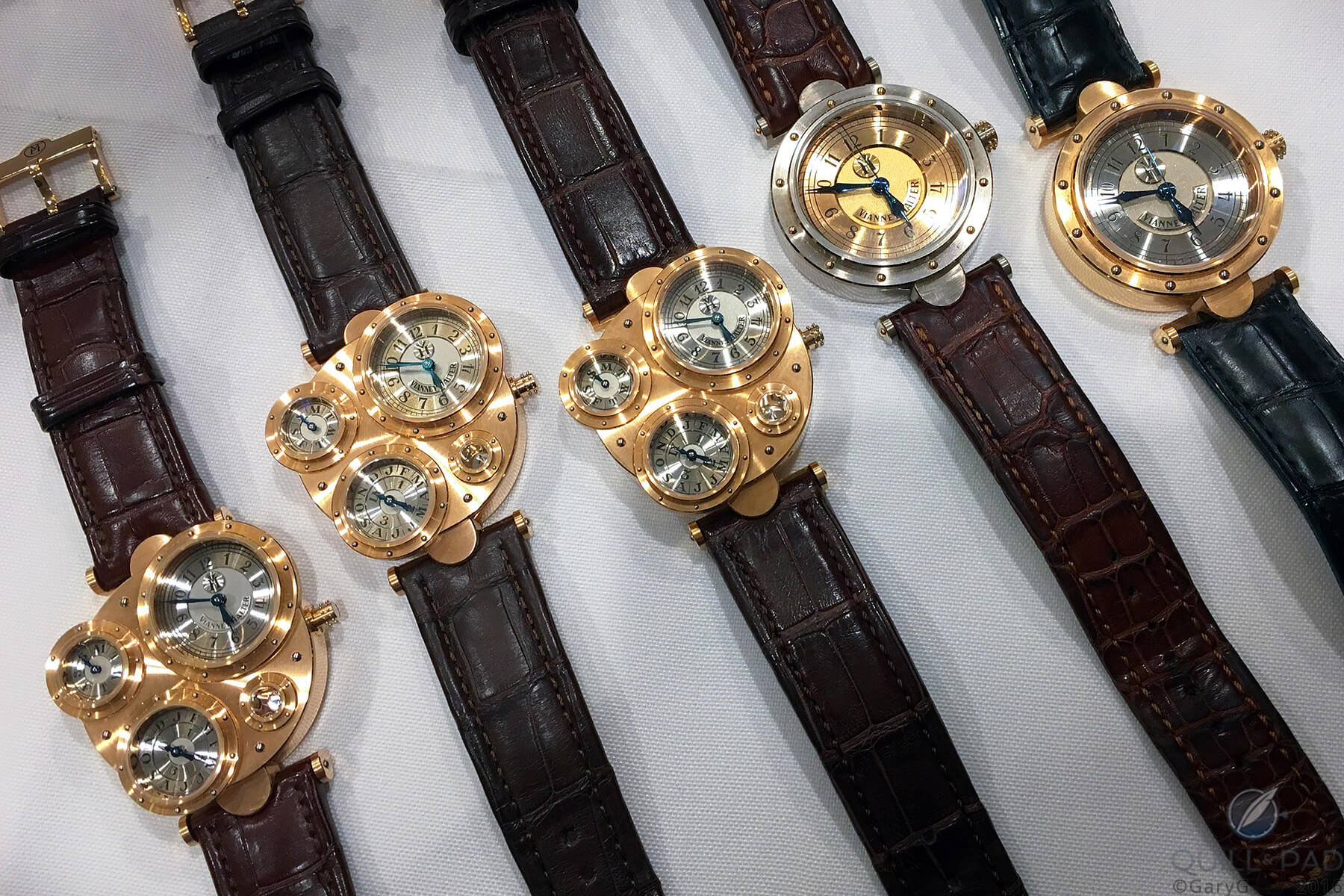
Table scene at a recent watch dinner, including three of the 36 Vianney Halter Antiqua models made in pink gold
On the other hand, you may want to channel your energies elsewhere if you:
- Don’t think you would ever wear the watch (for my part, I do wear mine fairly frequently and like the way that the main time dial peeks discreetly out from under my cuff)
- Can’t find an example that has had a full service from Vianney, including the running design upgrades needed by the earlier pieces
Just don’t ask me to sell mine as I plan to enjoy it for a long time!
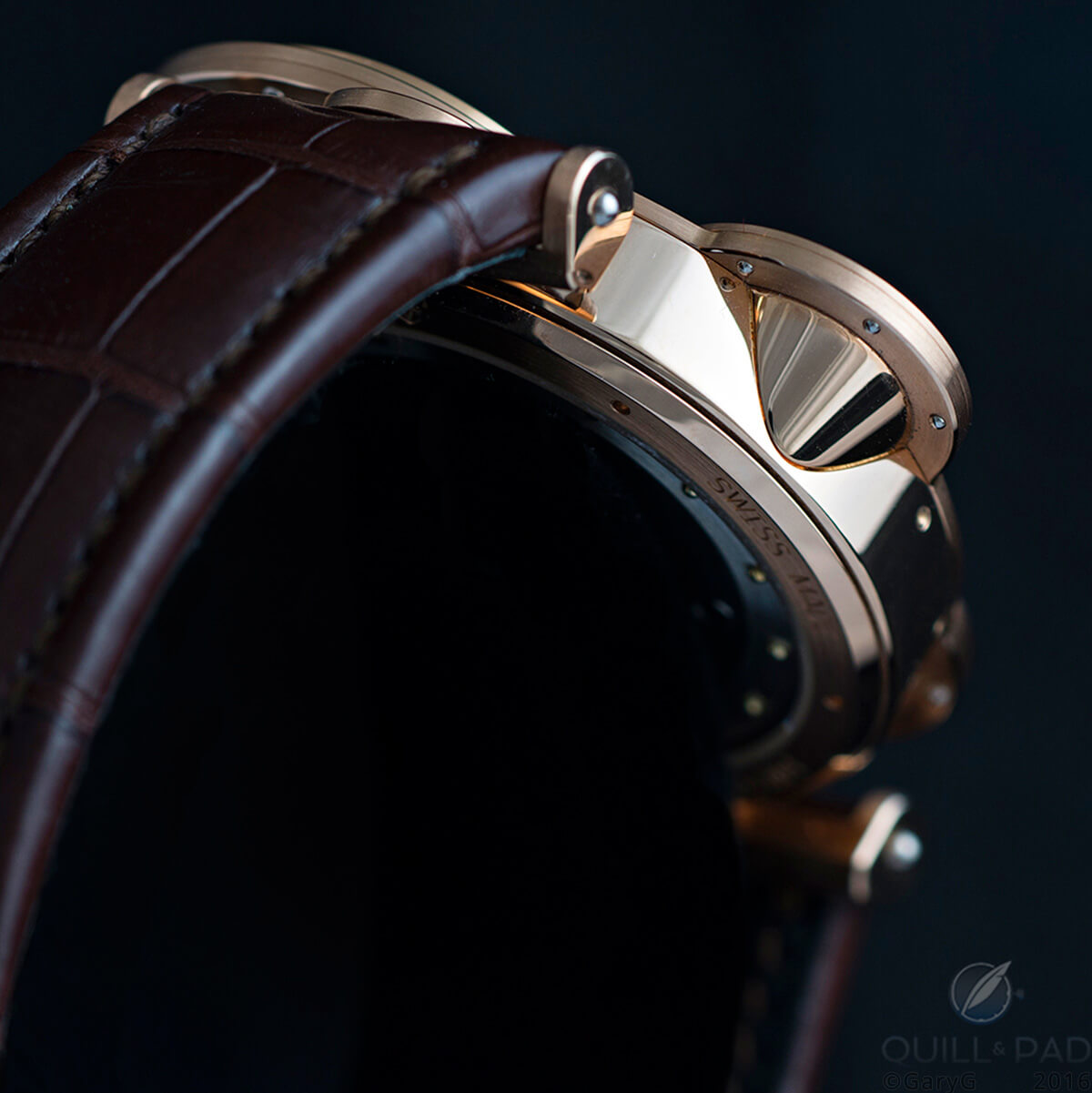
Parting shot: Vianney Halter Antiqua in pink gold
For more information please visit www.vianney-halter.com/watch-perpetual-calendar-vianney-halter-antiqua.
Quick Facts Vianney Halter Antiqua
Case: yellow gold, pink gold, white gold, platinum; one gem-set platinum case, 46.5 x 42.5 mm (including lugs and crown), underlying round case 36 mm
Dial: hand-engraved platinum dials (yellow and pink gold cases); platinum, yellow gold, and pink gold dials (platinum and white gold cases
Movement: automatic Caliber VH 198 with 35-hour power reserve
Functions: hours, minutes; instantaneous perpetual calendar with day, date, month, and leap year cycle
Production years: 1998 to 2016
Price: most recent auction price 500,000 HKD (approx. $65,000) for white gold, December 2015
* This article was first published on July 30, 2016 at Why I Bought It: Vianney Halter Antiqua.
You may also enjoy:
Leave a Reply
Want to join the discussion?Feel free to contribute!





















































Hi, fascinated by your site which I came across whilst looking at John Harrison’s clocks after seeing the Only Fools and Horses episode where they auctioned a Harrison timepiece. The pictures you have taken of the beautiful VianneyHalter watch that you own are superb. What equipment do you use to take them? Another interest of mine is photography! Thank you in anticipation. Chris W